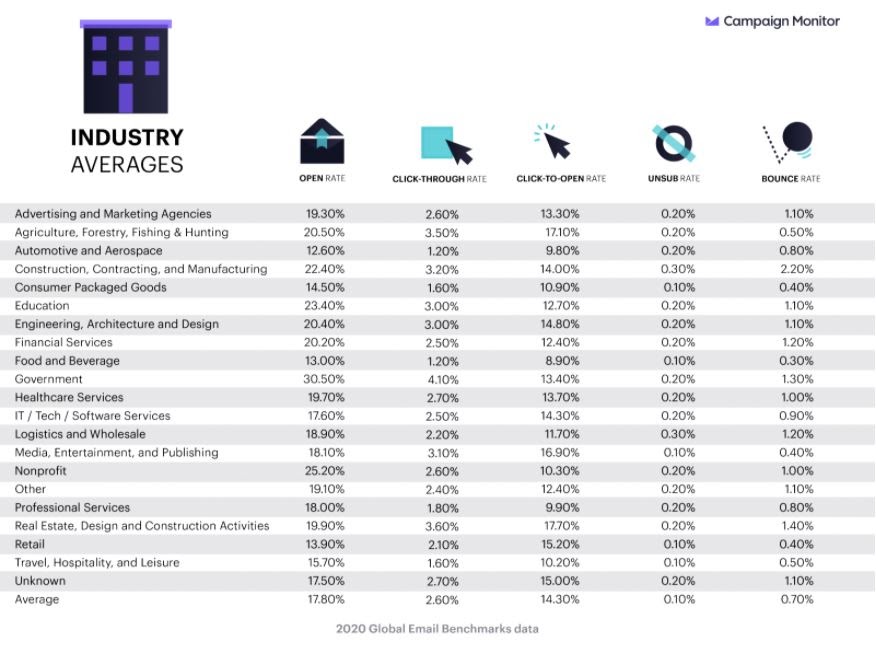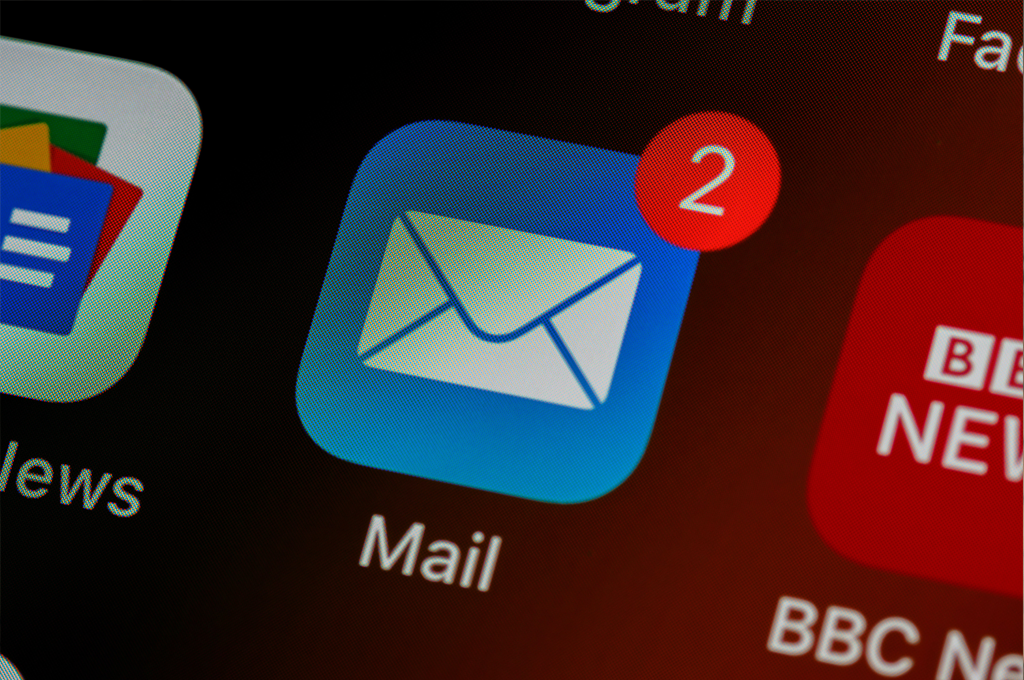It is safe to assume that most, if not all of us have experienced an email sign up at some stage. Email open rates are one of the many metrics by which business owners, marketing agencies, and self-marketers measure and track their performance.
If we keep in mind that an email newsletter contains information that was subscribed to by a user, it is key to make sure every newsletter is the best version of your company you can offer.
Where marketing agencies and freelancers offer a return on investment(ROI), is by achieving a higher open rate than what is classified as a benchmark in their specific industry. There can be some delusion when basing open rates off irrelevant industry benchmarks. Having worked with multiple email newsletter campaigns, there is some argument for using a general benchmark open rate by averaging out the industries that have audience commonalities. Ie. B2B, B2C, ecommerce, marketing etc.
Example: Using the marketing newsletter benchmark open rate of 17% as a point to base the success of your fashion blog newsletter open rate upon. If you fall under or meet the benchmark, that is not to say your newsletter was bad. However, capturing a higher open rate than what is classified as the benchmark would indicate that the copywriting was good and the messaging was worth engaging with.
Thankfully, there are great resources out there that can aid in identifying what industry benchmark should be used for reporting. One great source for marketers across the world is the research conducted by Campaign Monitor. They released an in-depth study of open rates segmented by each industry for 2020.
Email Marketing Open Rates by Industry Averages

Where this information holds a lot of value is to create a base to determine their skills as email marketers. While it can be scarce to find a marketer or agency that has practiced email marketing in every specific industry noted above, finding someone who can prove a higher open rate than the benchmark rate would be a good indication of a skilled email marketer.
Having access to either a in-house or freelance copywriter can benefit the company to substantially increase your email open rates. Keep in mind, those who have experience in this field are subject to education in the psychology behind sales copy, active language and CTA’s that actually get clicks.
To simplify even further – the goal of having an over average email open rate is to drive traffic to the website, educate customers on new products and to incentivize action by the user, traditionally coinciding with sales, demo requests and other forms of communication that will benefit the business.
A little boasting here – our average email open rate for our clients falls in the 25-40% open rates in industries such as energy, health and wellness, and education. It is easily forgotten that the goal is that the company will benefit for all the reasons noted above. However, capturing a substantially larger open rate for our clients always gives our a team a boost of confidence.

Let’s look at some data on email marketing
There are a multiple email providers available today, but all serve the same purpose. Gmail from Google has captured the majority of the market share, boasting 1.8 billion email accounts worldwide. Seeing as there is 7.8 billion people in the world in 2020, email accounts using Gmail have captured 23% of the worlds population.
If you have not optimized all of your digital communications to be mobile friendly, you are already falling behind. 75% of all Gmail users access their email on mobile devices. If a user opens an email on their phone and is greeted with enlarged images and poorly formatted text, it is safe to assume that the user may click out your newsletter pretty fast.
For those in the B2B space, the Content Marketing Institute report states that 81% of B2B marketers say their most used form of content marketing is email newsletters. The same study also reported that 90% of content marketers say email engagement is the top metric they track to measure content performance. Safe to say that if marketers consider email open rates a top priority, it tells us that it continues to be a worthy investment to engage with an audience.

Capturing new subscribers is always a win, but where some marketers may fail is retaining customers. This is where email newsletters do their best work. The user has chosen to enter into a relationship with the company they subscribed to, thus they hope to receive relevant information and updates on what is in interest to them.
A study conducted by Emarsys in 2018 stated that 80% of business professionals believe that email marketing increases customer retention. To add to this, there is nothing better for customer retention than a promotion, discount and/or coupon code that is only available to email subscribers.
Are you looking to launch an email marketing campaign? Get in touch with our business development representative to discuss ideas on how to best engage and inform your customers through email. With some level of confidence, it seems that email newsletters will be here to stay and a prominent form of communication in 2021.




